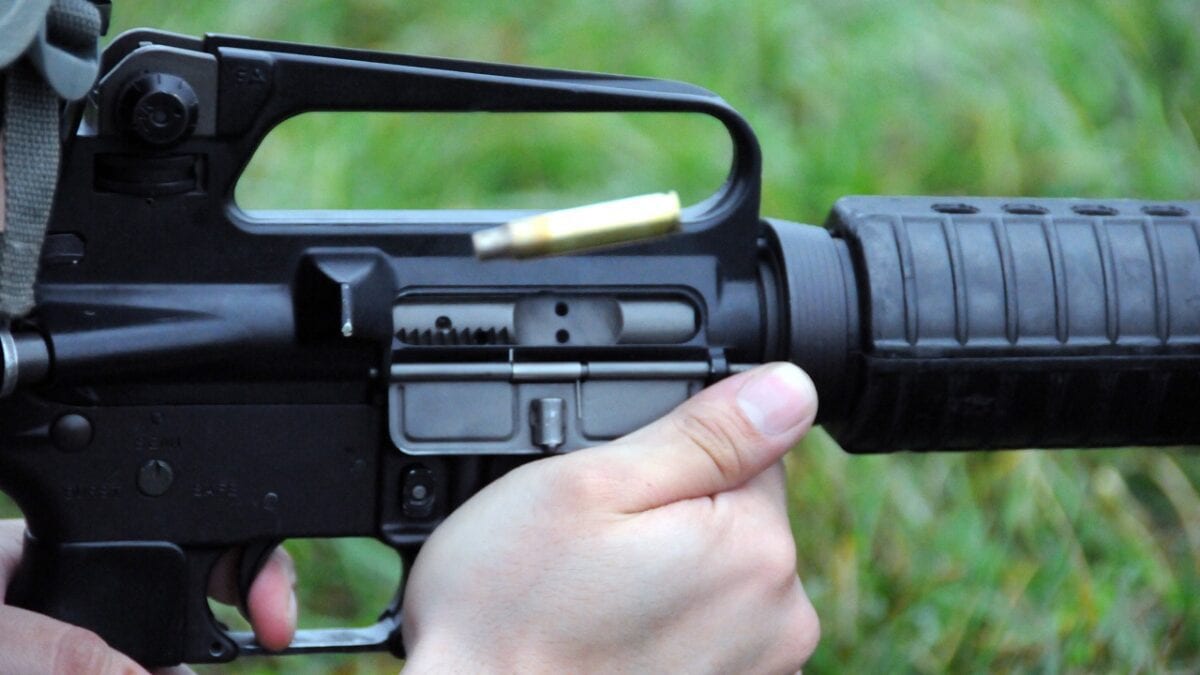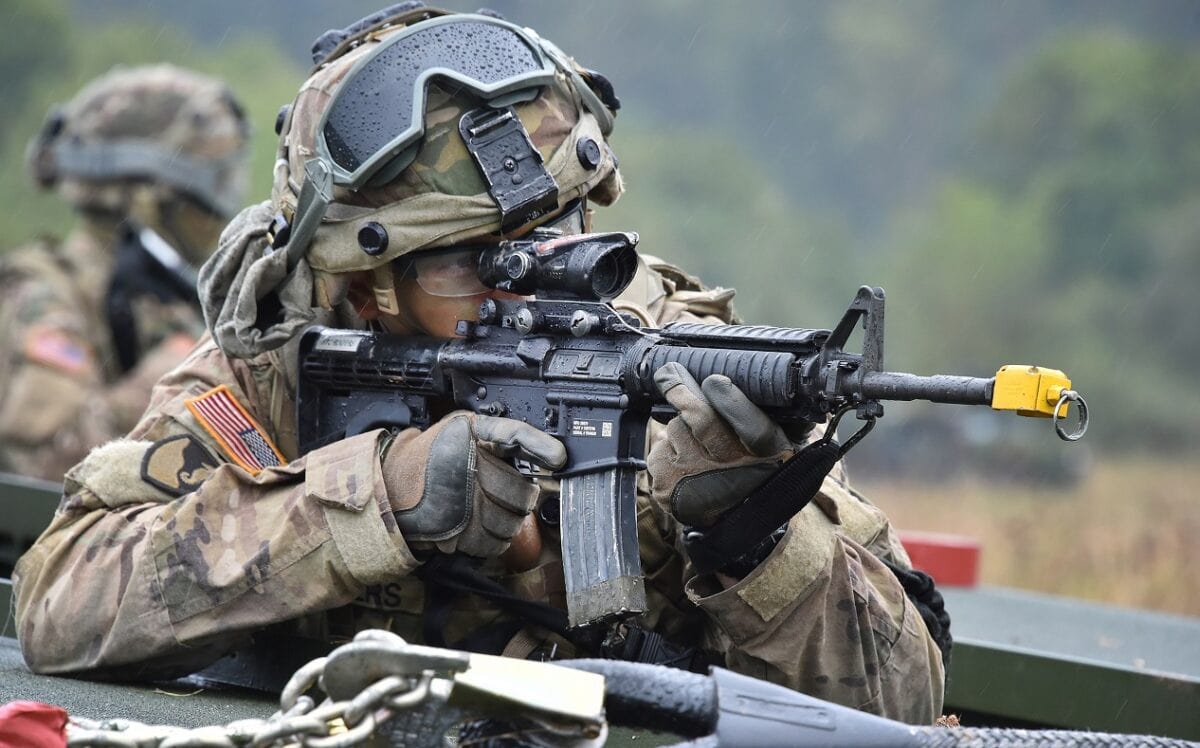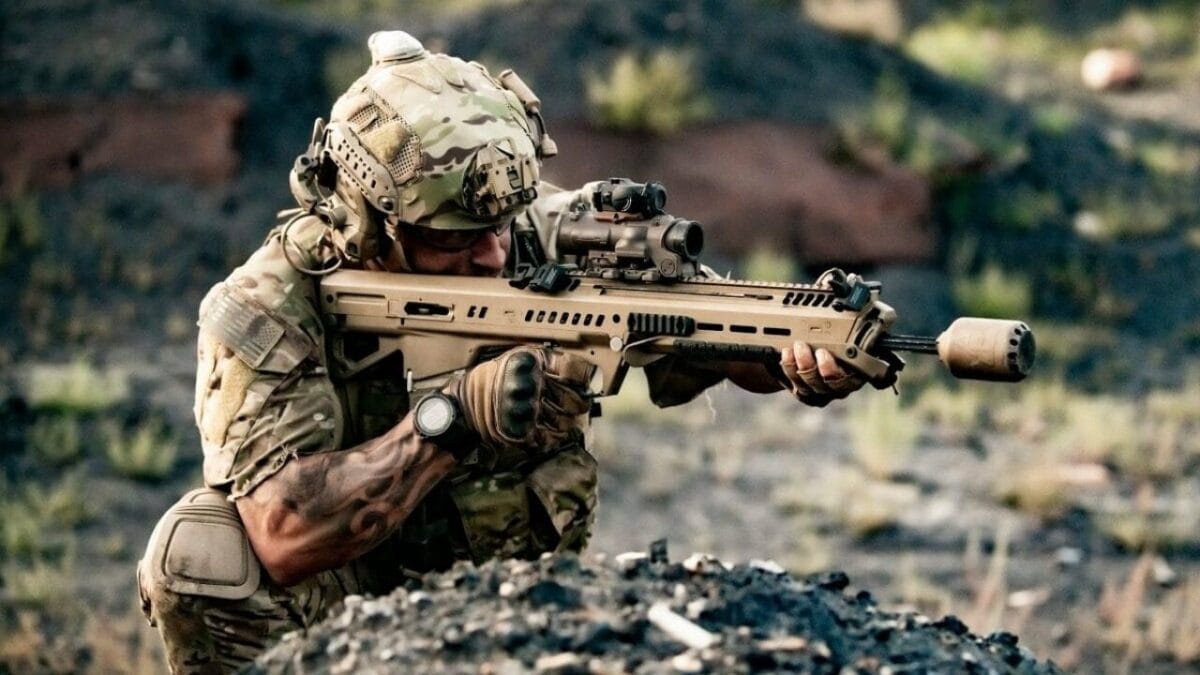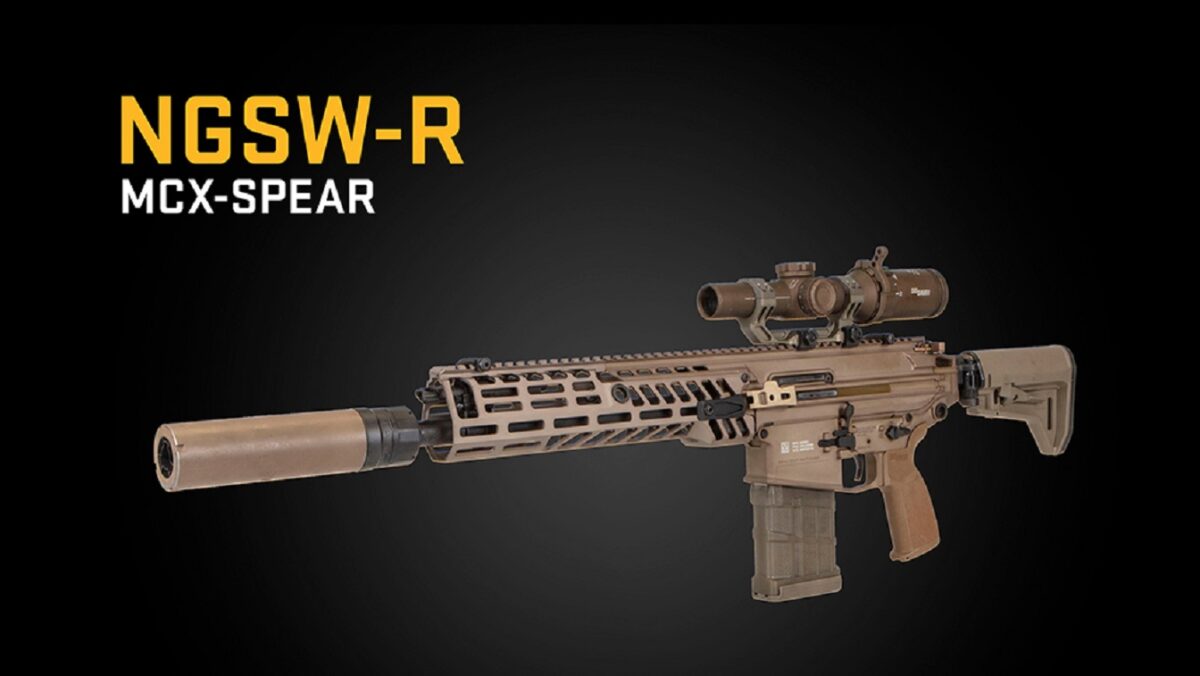Why did these efforts always seem to fail? My gosh, does the Army seem to hate the M4 and M16 series of rifles. That’s hyperbolic, but when you look at all the programs they’ve utilized to try and replace the ubiquitous American service rifle, it’s tough not to think there’s some spite involved.
You could argue that the Army was trying to replace the M16 almost as soon as it was adopted. Admittedly, the switch to a rifle chambered in 5.56 was controversial at the time, but one would expect that the most popular rifle platform in America would have entered service with a bit more aplomb.
Today, some iteration of the M16 has been in service for nearly half a century and it’s proven itself in combat time and time again. In the 60+ years since it was originally designed, the weapon has seen multiple updates and new iterations, but is it really capable of sustaining America’s combat needs in a new era of great power competition? In order to answer that, let’s explore all the times the Army wanted to replace the M4 and M16… and why they ultimately didn’t.
The M4 and M16 Replacements
Stoner 63
In 1963, the same man who invented the AR-15 turned M16 also invented the Stoner 63. I love the Stoner 63, and Eugene Stoner was clearly working with an idea that was well ahead of its time. The Army also saw the potential of this rifle, and began testing the Stoner 63 as a possible option for Army and Marine Corps small arms use. The M16 was still going through the adoption process at the time, and already, the Army was looking elsewhere.
Okay, so this wasn’t intended as a direct replacement for the M16, but Army’s interest a year before the M16 officially entered service was telling. The modular design of the Stoner 63 allowed a single receiver to be a rifle, a carbine, a belt-fed machine gun, an automatic rifle, a crew-served gun, and more. It could be both an M4 or M16, a SAW or a turret gun–really anything the warfighter needed.

Sgt. Marco Gutierrez, a public affairs specialist from Indianapolis, Indiana assigned to the U.S. Army Reserve’s 350th Public Affairs Detachment, fires his M-16A2 at the range on Camp Atterbury, Indiana Nov. 3. Army Reserve Soldiers qualify on their individual assigned weapon once a year in order to be “mission capable” should they need to deploy.
The premise is fascinating enough that it may warrant its own article. Sadly, however, the Stoner 63 was a bit finicky and just couldn’t keep up with the M16, dooming it the discard pile.
Project NIBLICK
Project NIBLICK was a follow-up to Project SALVO, which began in 1951 and ended with the suggestion to adopt the M16. NIBLICK was to be a grenade launcher that would attach to a Project SALVO’s unusual flechette-firing weapon. A flechette is a pointed steel projectile with a vaned tail to provide stability during flight.
This setup would have coupled SALVO’s rifle with the grenade launcher in an over/under design. At the time, the grenadier of an Army squad carried an M79 single-shot grenade launcher.
The rate of fire offered by the NIBLICK could be as high as 2,400 rounds per minute. That’s absurdly fast for a rifle. The M16 fires at only 700-900 rounds per minute, as a comparison. The program died due to issues largely related to the flechette ammunition, but we did gain the idea of an under-barrel grenade launcher
Advanced Combat Rifle
The Advanced Combat Rifle (ACR) program started in 1986, with the intention of replacing the M16, as the M4 had yet to manifest. Not just set on becoming America’s next service rifle of choice, the program aimed to double the hit probability of a soldier in the fight. Colt, HK, AAI, and Steyr produced samples that were all very interesting in design and execution. The ammo types involved flechettes, duplex ammunition, and caseless ammunition. Each was meant to increase the lethality of the soldier via a high rate of fire, higher capacity weapons, or duplex rounds that packed two projectiles into a single cartridge.

U.S. Army Sgt. Benjamin Rodgers, assigned to Bravo Troop, Regimental Engineer Squadron, 2d Cavalry Regiment, provides security during Exercise Allied Spirit V at the 7th Army Training Command’s Hohenfels Training Area, Germany, Oct. 4, 2016. Exercise Allied Spirit includes about 2,520 participants from eight NATO nations and exercises tactical interoperability and tests secure communications within Alliance members and partner nations. (U.S. Army photo by Visual Information Specialist Gertrud Zach)
The ACR project proved unsuccessful, despite costing the taxpayer some $300 million dollars. Imagine how much training the same $300 million could have funded… More training might not have doubled a soldier’s hit potential, but it’d get them closer with an M4 or M16 than any of the platforms in this project could manage.
OICW
The Objective Individual Combat Weapon hoped to be the future of combat rifles. It was going to change warfare as we knew it! I know because I used it a lot in Ghost Recon back in the day.
Tom Clancy jokes aside, the OICW program actually had a lot of potential, and the weapon it produced brought a number of strengths to the table. Simply put, the OICW would grant soldiers the ability to kill an enemy while they hid behind cover with airburst munitions. It also would have replaced the M4, the M16, and the M249 light machine gun.
The OICW was really a combination of a light grenade launcher and a rifle. The grenades could be programmed to explode in the air as they passed the enemy’s cover, using fragmentation to kill them. The rifle portion would act as the close-range fighting tool. The weapons entered for consideration, but cool as they may have been, they were also huge, somewhat unreliable, and quite expensive. The OICW program did lead to some excellent designs we see today, like the MP7, the XM26, and the XM109. This concept may yet find a home in a future service rifle.
The XM8
One such weapon that grew out of the OICW effort was the XM8. The XM8 was that rifle from every video game and sci-fi movie in the mid-2000s. Like so many others, this modernized weapon was eyed by the U.S. Army as a replacement for the M4 and M16 series of rifles. The idea was that the XM8 would be cheaper, lighter, and more effective than its predecessors. The XM8 promised modularity that allowed for an assault rifle, a DMR, a short carbine, and a light support weapon.
But as development carried on, the XM8 got heavier, more expensive, and wasn’t really any more efficient than the M16 rifle. The XM8 did see some success in the foreign markets, but never took off in the States.
The Latest M4 and M16 Killer – The Next Generation Squad Weapon
As I type this, the Army’s latest M4 and M16 killer is in development. The project aims to arm an entire squad of soldiers with a rifle and a squad support weapon, serving as a replacement for both the main infantry rifle and the M249 light machine gun. Weapons considered for the program also must utilize a 6.8mm projectile, rather than the now-classic NATO 5.56.

NGSW. Image Credit – General Dynamics.

SIG Sauer NGSW. Image Credit: Creative Commons.
6.8 projectiles offer better ballistics than both the 5.6 and 7.62 rounds currently leveraged by American (and many international) service rifles. Sig Sauer, Textron, and General Dynamics have all submitted their final prototypes and truckloads of ammo to the Army for testing. Will it succeed? Maybe, but I wouldn’t put a bet down just yet.
Why do these efforts always fail?
A lot of these ideas might have been solid, but they came about before the technology of their day could support them. Also, the M4 and M16 family of rifles are downright outstanding. They’re lightweight, supermodular, and quite accurate as far as service rifles go. Rifles like the HK 416 might even be better… but are they substantially better? Is a rifle that’s 5% more accurate enough to justify replacing hundreds of thousands of service rifles and spending millions of dollars? That balance of cost versus improvement spells the end for many weapons programs.
Ultimately I think the swap from the AR family to something else will require a new caliber, and that caliber will have to provide a substantial improvement over the 5.56 round. As we’ve seen, the military needs short carbines for close quarter’s battles, long rifles for designated marksmen, and carbines for general infantry forces. The next gun will need to fit those roles and provide a marked increase in lethality to win over the bean counters.
The Army’s current program might be the answer, but that’ll be an uphill battle for sure. What do you think? Should we replace the M4 and M16? If not now, when and what would trigger a worthwhile change? Let me know below.
Travis Pike is a former Marine Machine gunner who served with 2nd Bn 2nd Marines for 5 years. He deployed in 2009 to Afghanistan and again in 2011 with the 22nd MEU(SOC) during a record-setting 11 months at sea. He’s trained with the Romanian Army, the Spanish Marines, the Emirate Marines, and the Afghan National Army. He serves as an NRA certified pistol instructor and teaches concealed carry classes. This first appeared in Sandboxx news.
